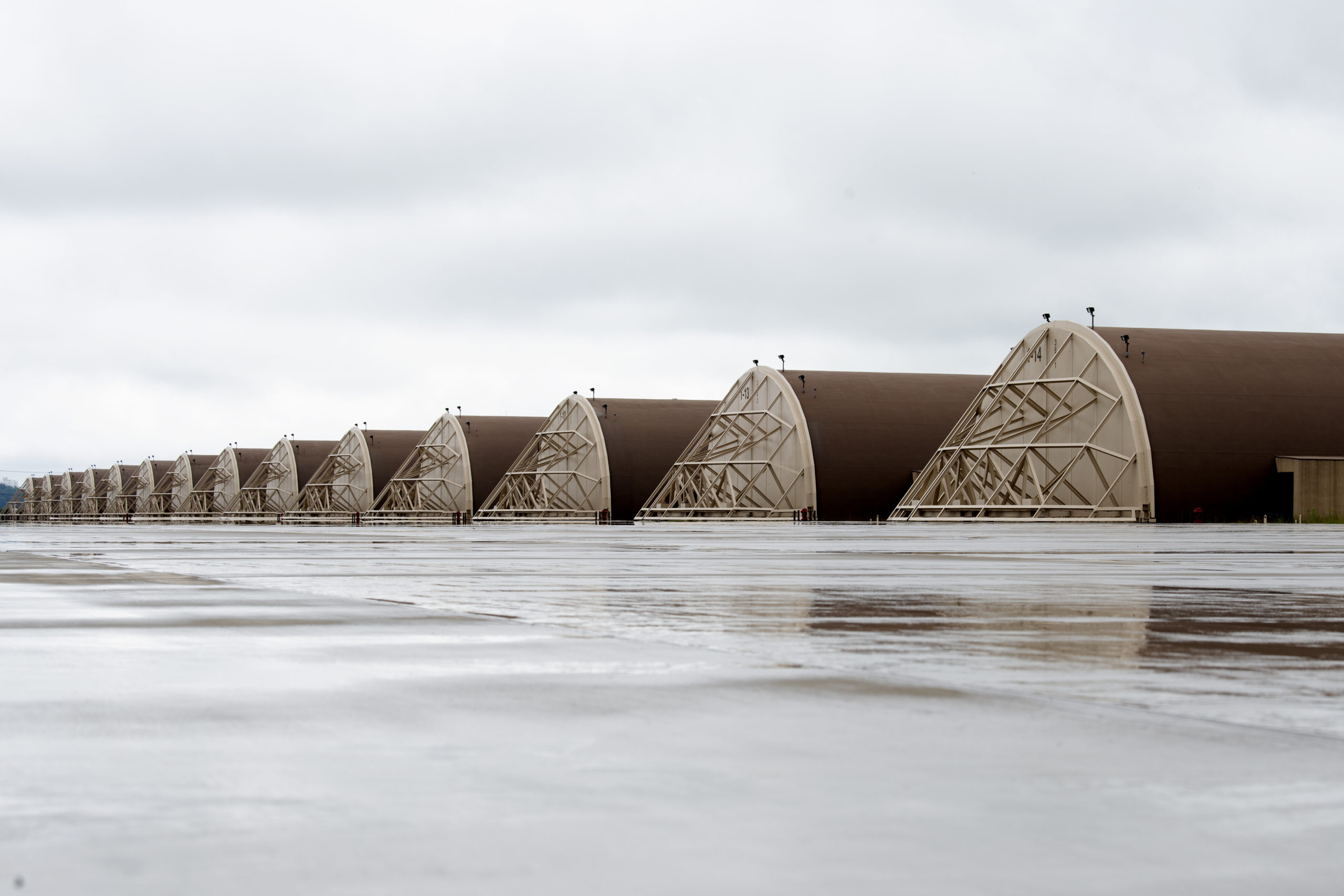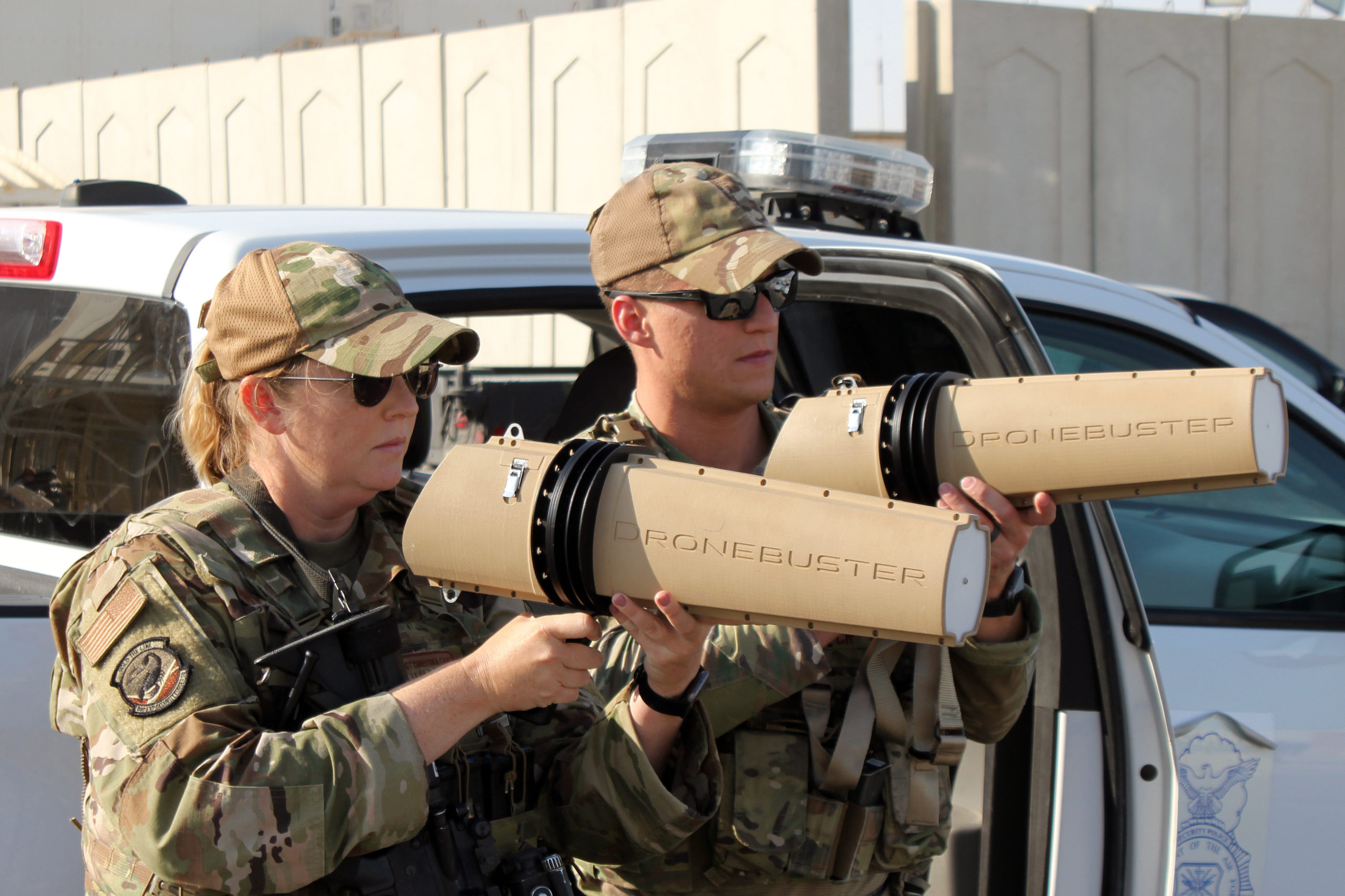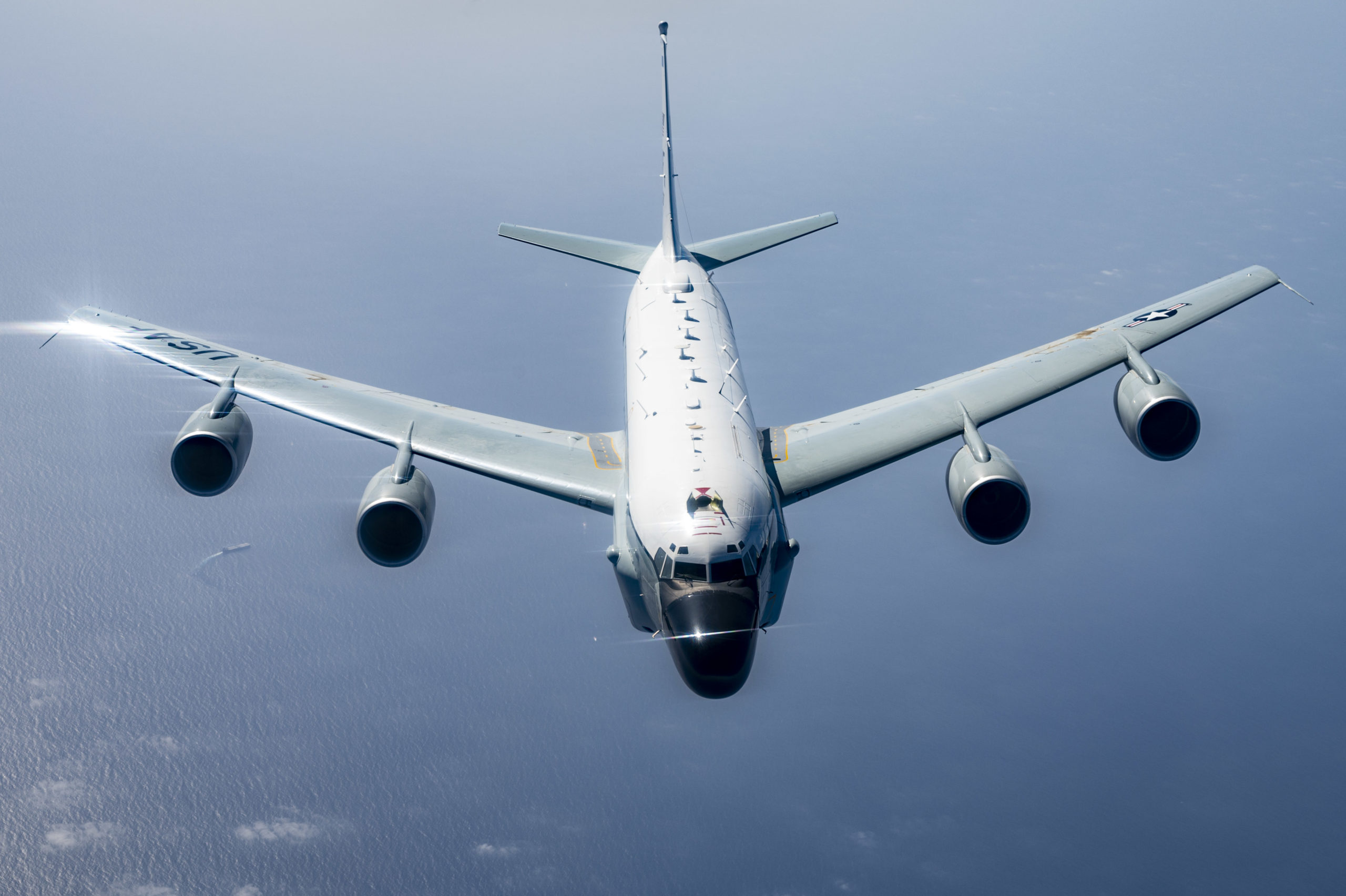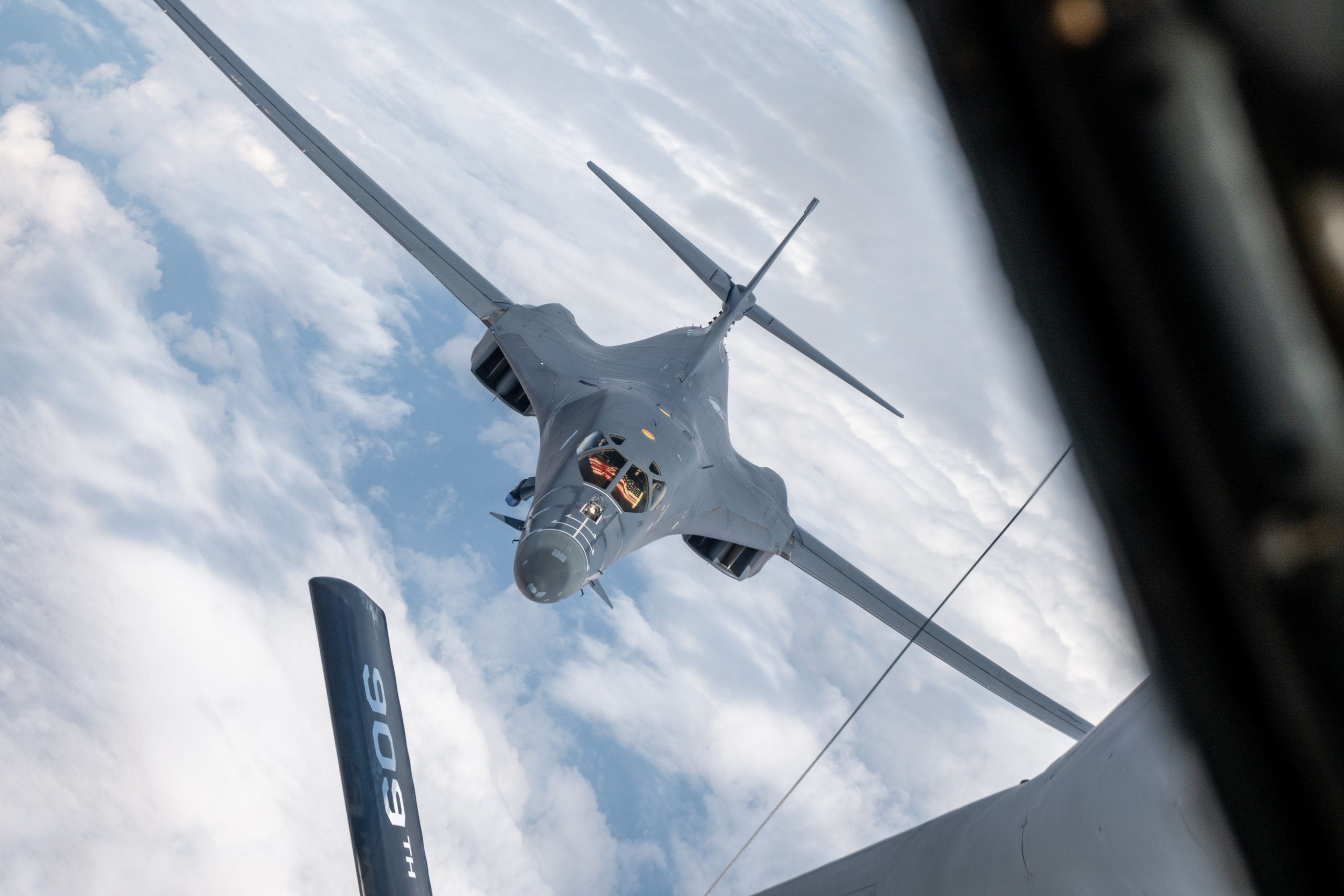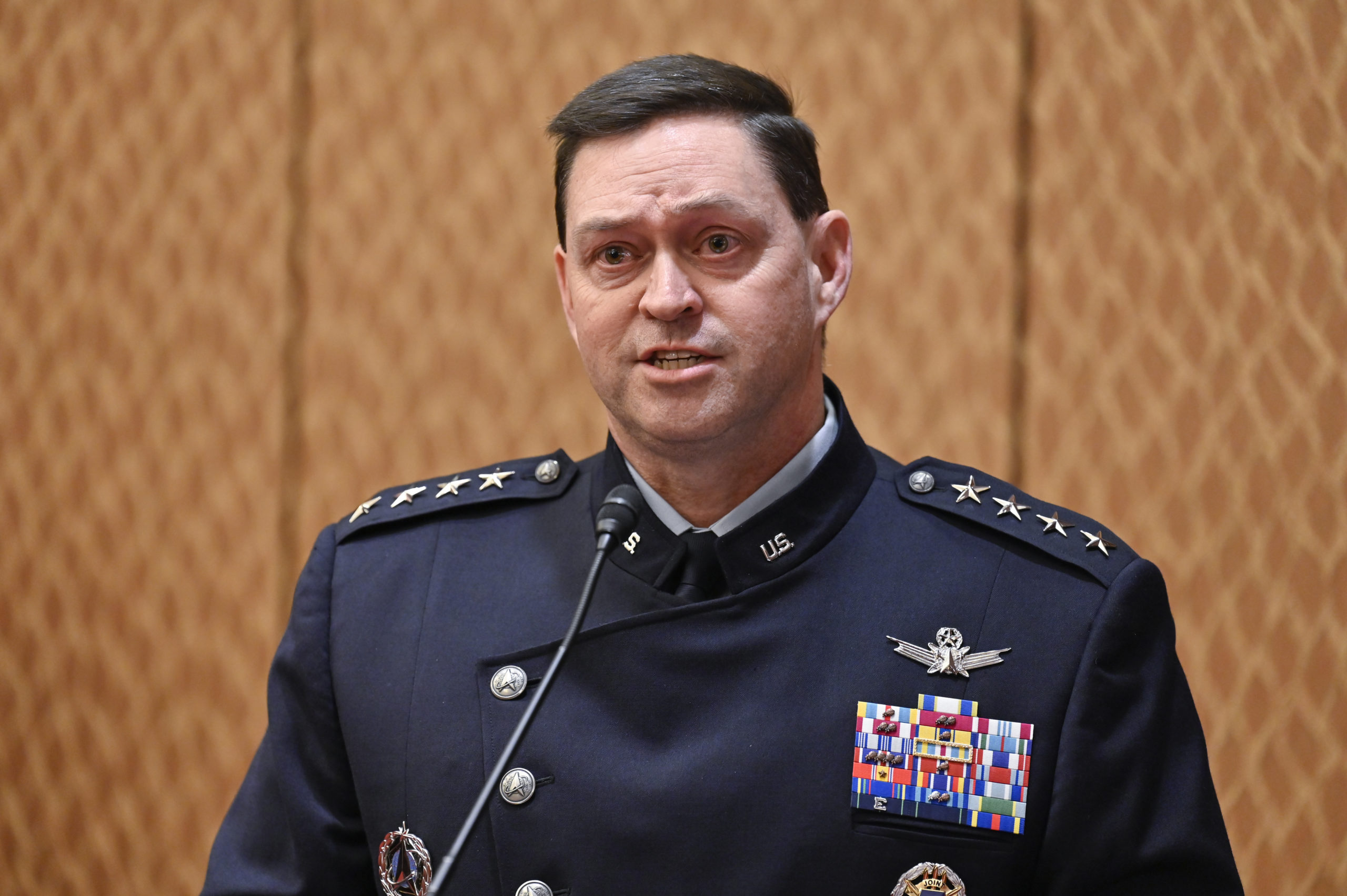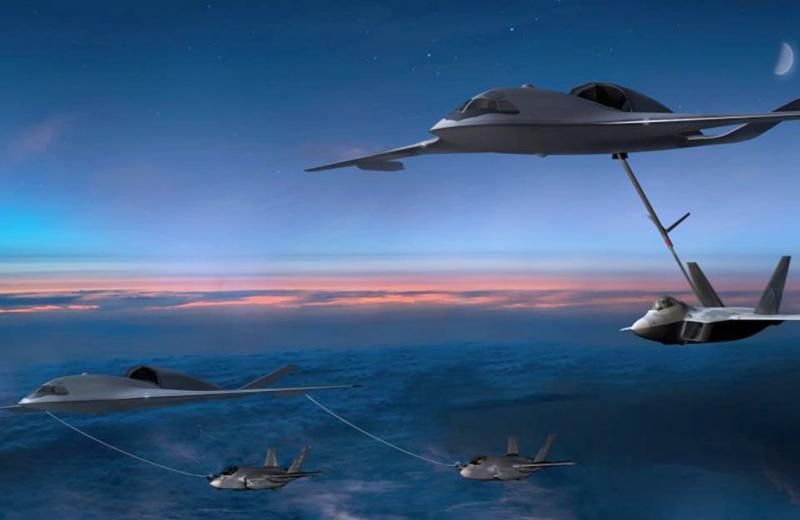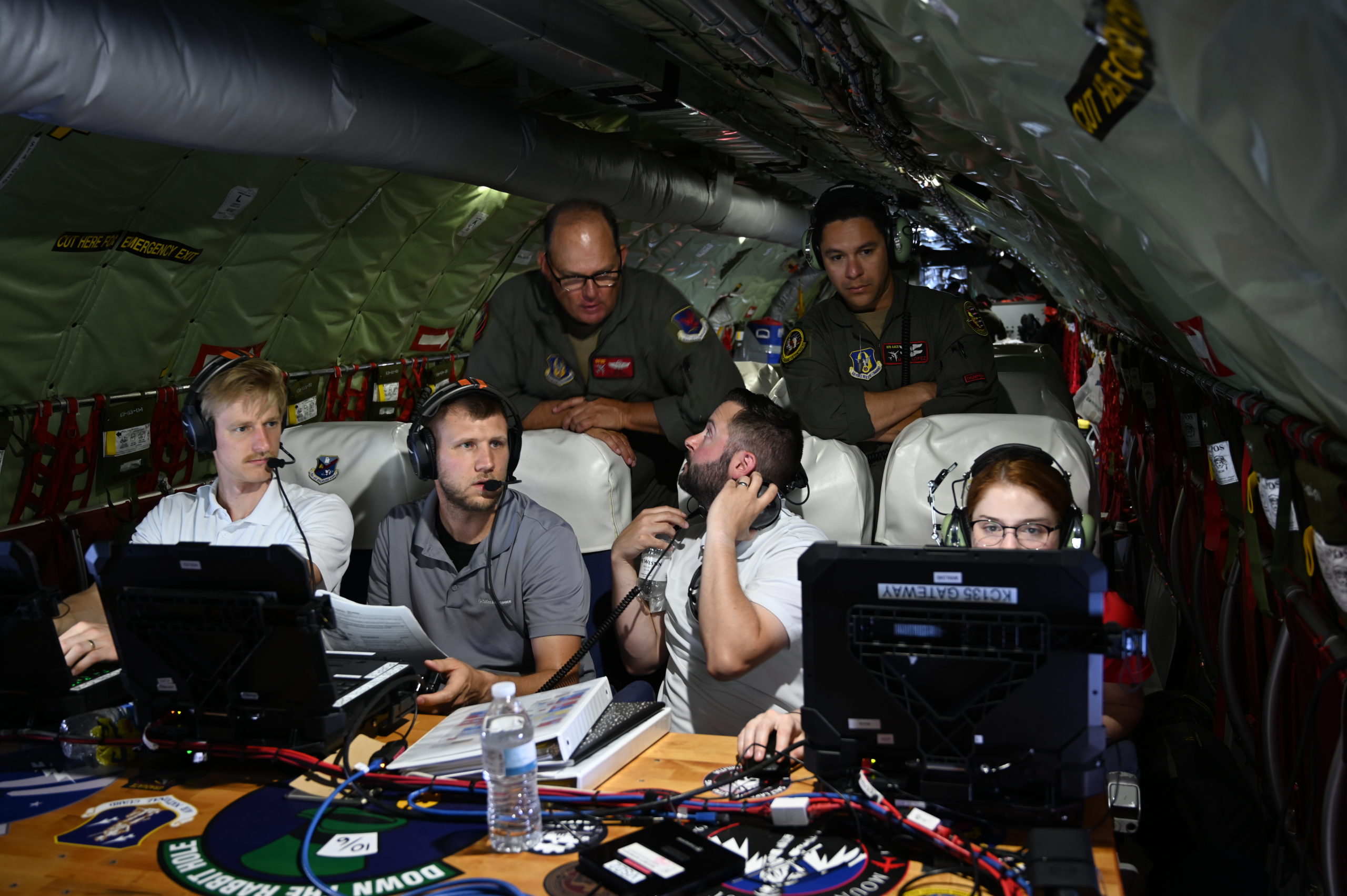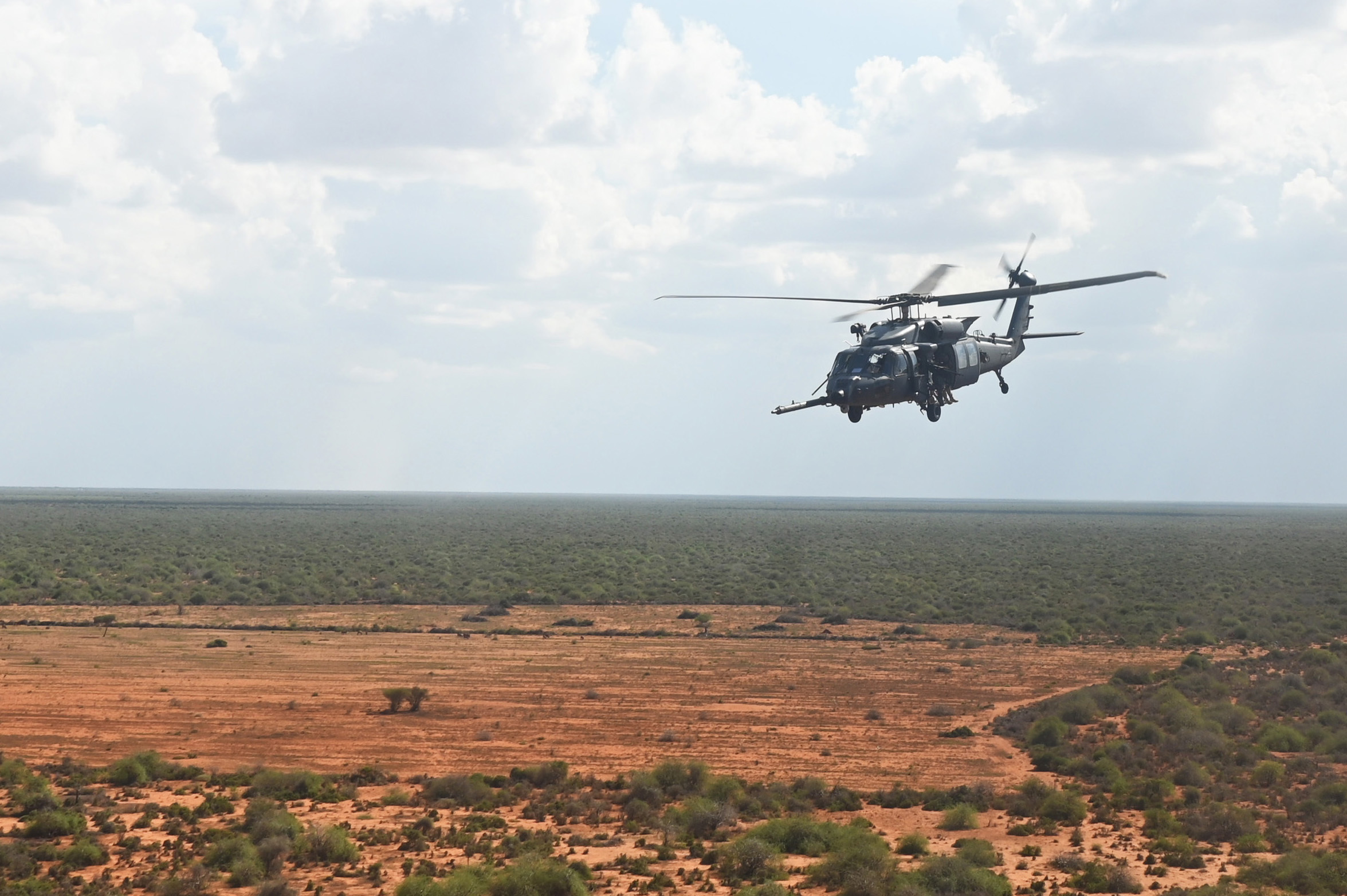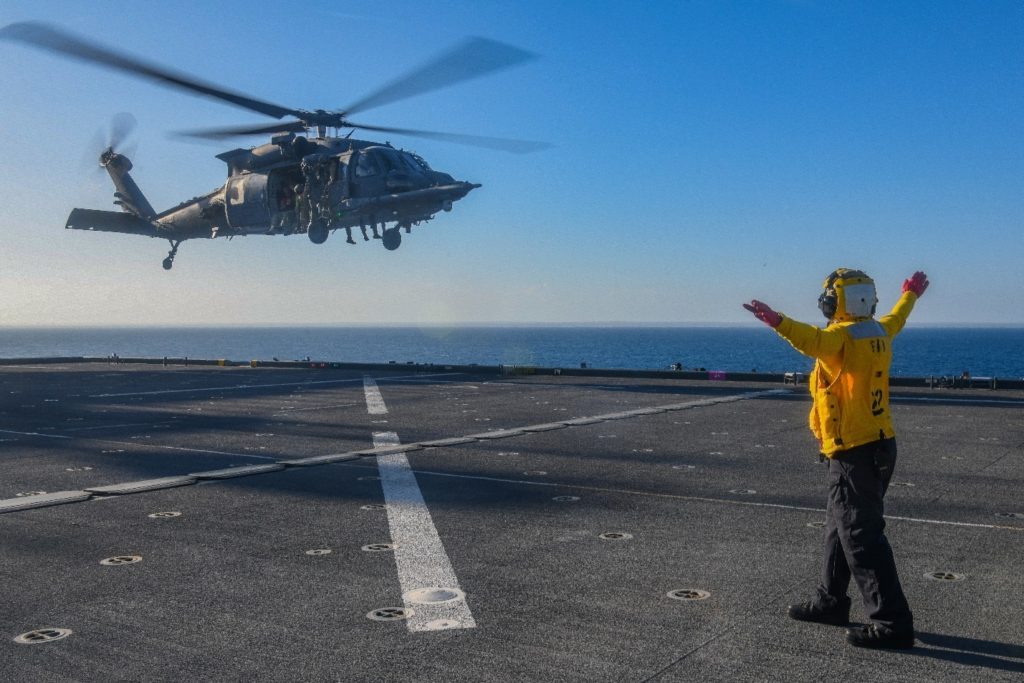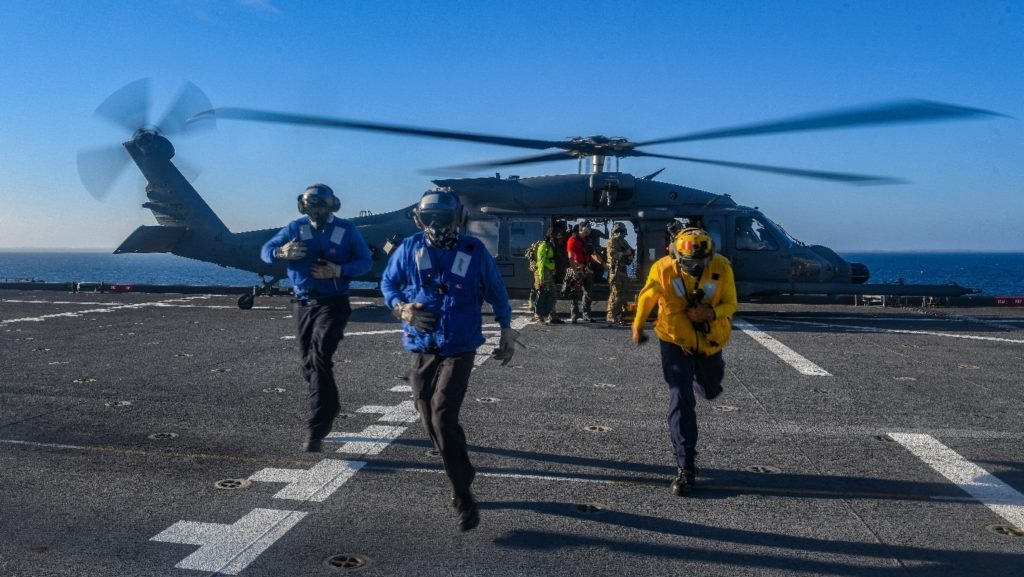Passive defenses—including hardened aircraft shelters, asset dispersal, prepositioned munitions and the ability to rapidly repair runways—are the most cost-effective air base defense investments, according to a new RAND Corporation report. However, the Air Force should invest in a multifaceted combination of active and passive defenses to fend off future threats from China and Russia, the report’s authors argue.
“Increasingly aggressive actions by China and Russia toward their neighbors have shifted the attitudes of defense policy makers about both aggressors over the past two decades,” the report states. “Not only is there a growing consensus that China and Russia represent significant threats to U.S. interests, but there are also growing calls for actions to counter the threats.”
The report notes that among Air Force Secretary Frank Kendall’s list of seven operational imperatives unveiled in 2022 is a call for “resilient basing.” That effort is closely tied to the service’s Agile Combat Employment concept, in which small teams of Airmen and aircraft disperse to remote, austere, or small locations and can move or operate quickly.
RAND explored many ACE alternatives and their cost-effectiveness alongside differing analyses of threats unique to China and Russia, using four input categories that included a variety of vectors, options, and available data. That data was fed through seven exclusive RAND models to generate four output categories.
One model noted in the report is the Theater Air Base Vulnerability Assessment Model (TAB-VAM), which analyzes the impact of an air base attack. This includes critical asset damage to structures, personnel, and equipment, but it also considers uncertainty, as the attack vector is up to the adversary.
“This approach hedges against assessing the attack strategy incorrectly and becomes critical when predicting the impacts of threat mitigations because an adaptive adversary can shift to a new attack vector using new investments made by the defender,” the report states.
RAND’S Theater Air Base Resiliency Optimization Model (TAB-ROM) then analyzes the cost-effectiveness of mitigation options, focusing on the most promising choices.
“To avoid having to calculate the effects of billions of possibilities (which might take years for TAB-ROM to compute), the model uses a genetic algorithm—a search method inspired by Charles Darwin’s theory of natural selection—to find the fittest … investments,” the report states. “The most viable options yield the highest sortie rates—or numbers of sorties per day—at the lowest costs.”
Air base resilience is also dependent on a keen understanding of individual threats and having a well-structured and continuous protection investment. These can differ based on the analysis of the threat.
For example, the report notes that China’s strategy would likely center on preemptive surprise, with their formidable medium-range DF-21 and intermediate range DF-26 ballistic missiles, along with their long-range CJ-20 bomber-launched arsenal.
“Early in a conflict, China could strike U.S. and partner-nation air bases, air and missile defense systems, and command centers with large ballistic and cruise missile raids,” the report states. “The missiles and their submunitions could be optimized for attacking runways or destroying aircraft on parking ramps.”
On the other hand, the report notes that the Russian threat to European U.S. bases and NATO allies is a bit different—Russia, the authors theorize, would likely use a combination of missiles and manned aircraft, along with possible nuclear weapons.
“Although the Russian missile force is smaller and less advanced than its Chinese counterpart, the Russian force still represents a threat to NATO air operations,” the report states, noting Russia’s efforts to destroy Ukrainian airfields during its ongoing invasion. “Also, while Russia has expended a considerable portion of its missile inventory in the Ukraine conflict, Russia’s potential long-range attack capability—including KH-101 cruise missiles, RS-26 ballistic missiles, and Kinzhal air-launched ballistic missiles—could threaten NATO bases throughout the region.”
Still, the report notes advantages held by the United States and NATO allies. These include the large number of hardened and very accessible western European airfields and facilities.
“The primary problem for NATO,” the report suggests, “is that larger U.S. and allied aircraft—such as tankers; bombers; and intelligence, surveillance, and reconnaissance platforms—would need to operate from more-remote bases to avoid the worst of the Russian threats.”
Such inputs, and many more, are crucial to the calculations generated by RAND’s multiple models and determining the cost-effectiveness of those responses.
“If the budget is $100 million, $500 million, or any specified level, TAB-ROM estimates the sortie rates that can be generated, complete with breakdowns of what mitigations to buy and where to put them,” the report states. “This toolkit of models has been invaluable in providing a structured and capable approach for addressing the complex problem of air base resiliency against future threats.”
The report notes, however, that ACE should not be the lone resilient basing investment, and shifting to a more agile and dispersed force can present its own set of challenges—two in particular.
“First, to generate sorties, an air base must bring together multiple assets, including maintenance personnel, functional aircraft, sufficient fuel, and an operational runway,” the report states, emphasizing that the loss of a single such asset could critically hinder a response. “Second, although the dispersal of aircraft across bases might be key to complicating adversary attacks and improving theater-wide resilience, how widely the Air Force can disperse can be limited by support asset requirements.”
